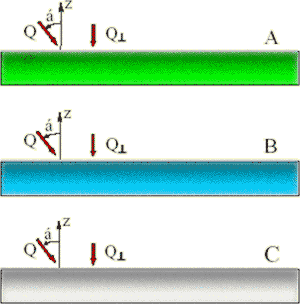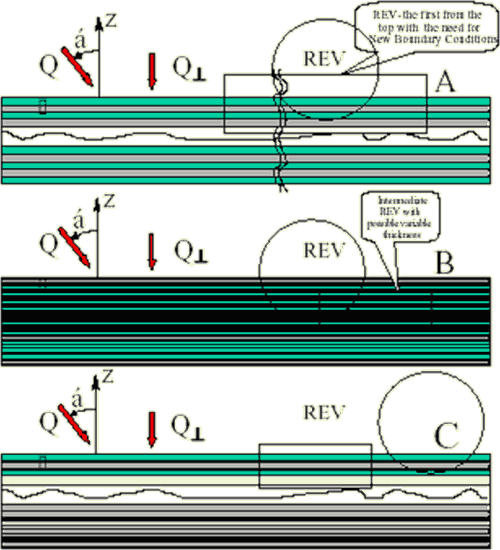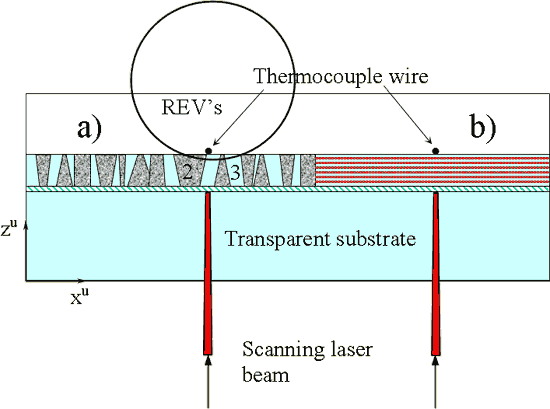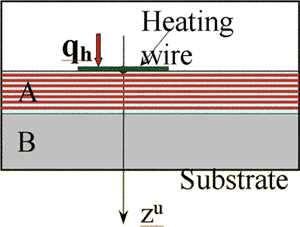
Fig. 1 Layer 1D on the top of medium, common ground homogeneous description upper hierarchical scale effective conductivity coefficient determination - perfect (A) and imperfect (B, C) interface conductance
Any experiment in Heterogeneous medium when being performed and analyzed needs a theoretical model to understand it. Those
analogs of modeling used for homogeneous medium are not applicable for heterogeneous media. The way of VAT heterogeneous media
experiments treatment is in its initial stage now. Probably the first publication regarding the need to make experiments
involving a heterogeneous medium supported by the heterogeneous theory along with some analysis of contemporary problems can be
found in -
Transport Phenomena in Heterogeneous Media: Experimental Data
Reduction and Analysis (793K)
In microscale thermal physics the effective coefficients are the first thing to take into account when engineering problem arises. Meanwhile, the methodologies and data reduction methods and models are taken from homogeneous physics. The simple morphologies like

Fig. 1 Layer 1D on the top of medium, common ground homogeneous description upper hierarchical scale effective conductivity coefficient determination - perfect (A) and imperfect (B, C) interface conductance

Fig. 2 Layer 1D medium upper hierarchical scale effective conductivity coefficient determination - perfect (A) and imperfect (B, C) interface conductance on the top of medium, common ground homogeneous description upper hierarchical scale effective conductivity coefficient determination - perfect (A) and imperfect (B, C) interface conductance
those used to be studied with the two techniques, one of them is the Scanning Laser Thermoelectric Microscope (SLTM)

Fig. 3 The schematic of the SLTM measurement area with the one layer of 2D lower scale column grains - (a), and the superlattice film on the substrate (b) xu and zu are upper scale coordinate axes unit vectors
while another is the 3 method
method

Fig. 4 Heat conductivity 3 method measurement
physical model for multilayer film or superlattice
A on the substrate B
method measurement
physical model for multilayer film or superlattice
A on the substrate B
allow to obtain more strict approach and the VAT based models, which we tried to reach in -
ANALYSIS OF MEASURING TECHNIQUES OF SUPERLATTICES THERMAL CONDUCTIVITY (414K)
More on heterogeneous VAT experiments see in Experimental Science in Heterogeneous Media